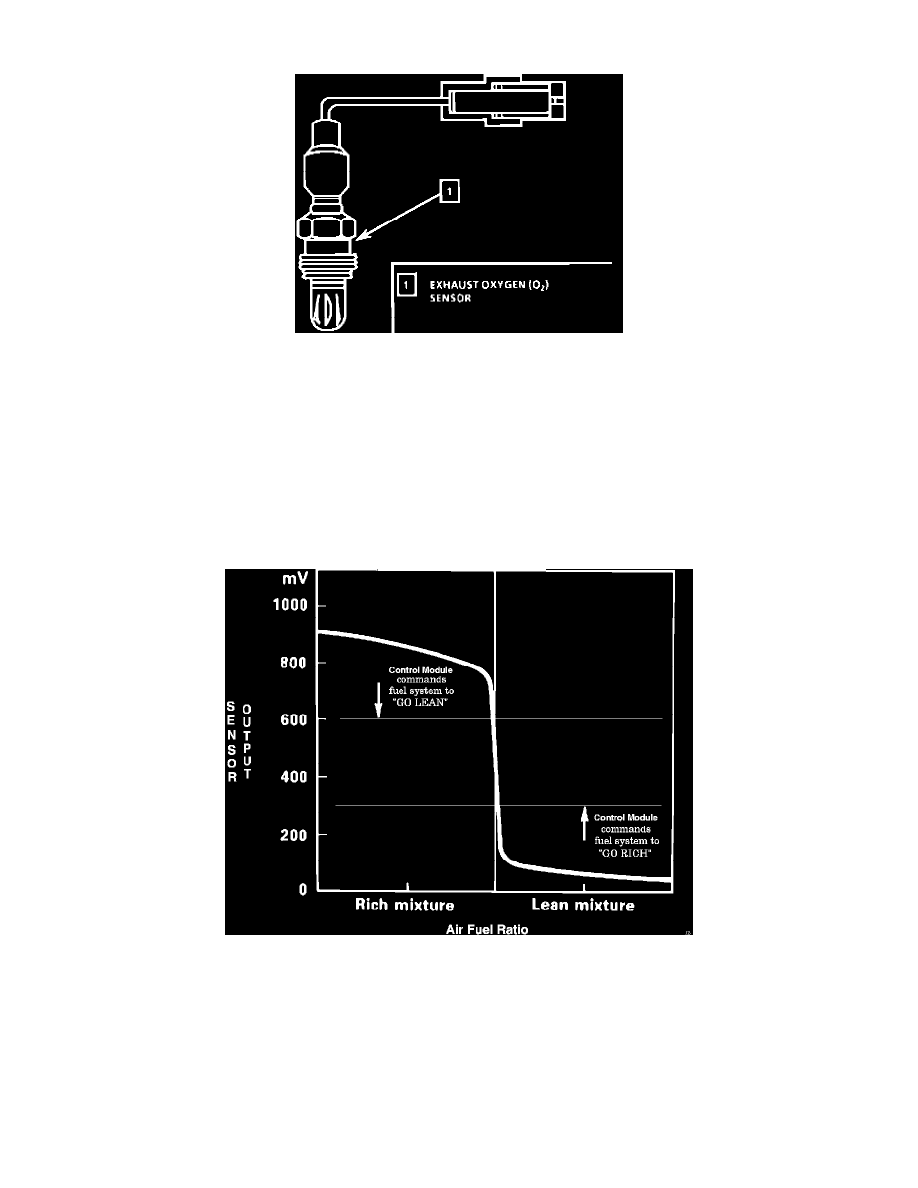G 20 Van V6-262 4.3L VIN Z (1993)

Oxygen Sensor: Description and Operation
Exhaust Oxygen Sensor (02)
PURPOSE
The Oxygen sensor (O2 Sensor) has the ability to produce a low voltage signal that feeds information on engine exhaust content to the control module.
CONSTRUCTION
The O2 Sensor is constructed from a zirconia/platinum electrolytic element. Zirconia is an electrolyte that conducts electricity under certain chemical
conditions. The element is made of a ceramic material and is an insulator when cold. At operating temperature, 315°C (600°F), the element becomes a
semiconductor. A platinum coating on the outer surface of the element stimulates further combustion of the exhaust gases right at the surface and this
helps deep the element up to the desired temperature. The O2 Sensor has an inter cavity which is filled with atmospheric (reference) air. The
atmosphere has approximately 21% oxygen in it. In the electrical circuit this inter cavity is the positive (+) terminal. The outer surface of the element
is exposed to the exhaust gas stream. It is the negative (-) terminal.
Oxygen Sensor Output Voltage vs. Air/Fuel Ratio
The difference in oxygen concentration in the narrow range of optimum air/fuel ratio causes a large voltage change that is easily measured.
OPERATION
A rich exhaust (excessive fuel) has almost no oxygen. When there is a large difference in the amount of oxygen touching the inside and outside
surfaces, there is more conduction, and the sensor puts out a voltage signal above 0.6 volts (600 mV). With lean exhaust (excessive oxygen) there is
about two percent oxygen in the exhaust. This is a smaller difference in oxygen from the outside surfaces which results in less conduction and a
voltage signal below 0.3 volts (300 mV). The voltages are monitored and used by the control module to "fine tune" the air/fuel ratio to achieve the
ideal mixture desired.
